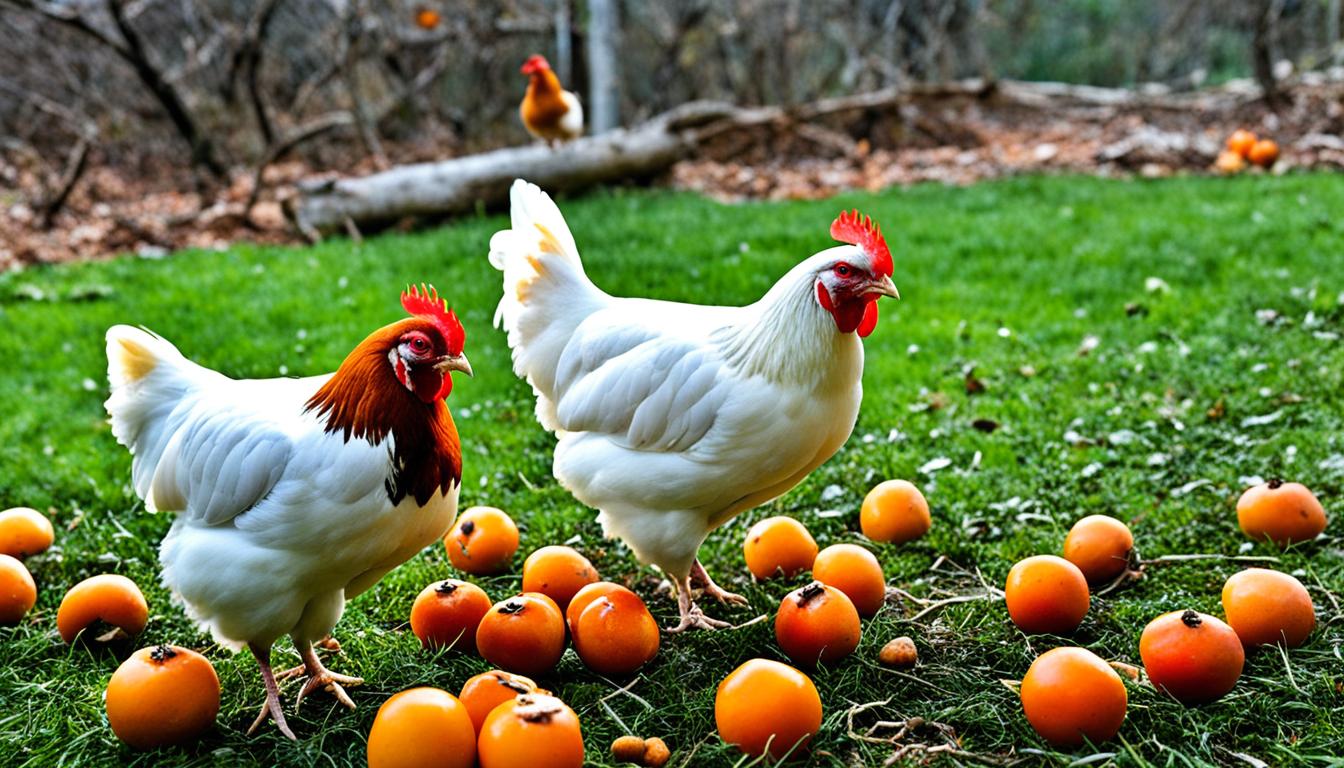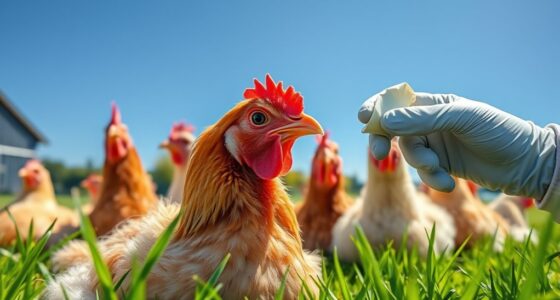Are you aware that weasels hunting cause the death of numerous chickens annually in the United States? These tiny yet fierce predators have the ability to destroy entire flocks, resulting in a gruesome scene of feathers and bodies. Recognizing the indicators of a weasel attack is essential in safeguarding your chickens and avoiding further casualties.
Key Takeaways
- Weasels are a less common but dangerous predator that targets chickens.
- Signs of a weasel attack include ripped-off heads, pulled-out intestines, and an acrid odor.
- Weasels can fit through small openings in coops and are relentless in their pursuit of chickens.
- Preventing weasel attacks requires securing coop walls and repairing any holes in the wire.
- Trapping weasels can be an effective method, but they may return to their home territory after relocation.
Understanding Weasels as Chicken Killers
Weasels are notorious predators that pose a significant threat to chickens. These small and agile creatures are known for their ruthless behavior, often attacking in family groups. They kill not only for survival but also for sport, leaving behind a gruesome sight of feathers, blood, and carcasses.
One distinctive characteristic of weasels is their unmistakable odor. This odor can serve as a telltale sign of their presence near chicken coops. Weasels are also skilled at maneuvering through small openings, making it essential for chicken owners to implement effective preventive measures.
To gain a better understanding of weasels and their attacks on chickens, let’s explore their behavior in more detail:
- Group Attacks: Weasels are social predators and often coordinate attacks, increasing the harm they inflict on chickens.
- Nocturnal Predation: These creatures are primarily active during the night, catching their prey off guard.
- Opportunistic Hunters: Weasels take advantage of any opportunity to strike, targeting chickens when other food sources are scarce.
- Swift and Precise Attacks: Weasels have sharp teeth and are known for their calculated bites on the back of a chicken’s neck, resulting in swift kills.
It is important to recognize these behavioral patterns to effectively protect chickens from weasel attacks. The next section will discuss practical strategies to prevent weasel entry into chicken coops and ensure the safety of your flock.
Preventing Weasel Attacks on Chickens
When it comes to protecting your chickens from weasel attacks, preventive measures are key. Weasels have the ability to dig under coop walls or squeeze through small holes to reach their prey. Fortunately, there are several steps you can take to secure your chicken coop and prevent weasel entry.
Securing the Chicken Coop
One effective method for preventing weasel attacks is to bury or reinforce the walls of the coop. By burying the walls underground or reinforcing them with wire mesh, you can create a barrier that weasels are less likely to penetrate. Additionally, installing sturdy wire fences with small holes around the perimeter of the coop can further deter weasels and other similar predators.
Maintaining the Coop
Regular maintenance of the coop is essential to prevent weasel entry. It’s important to promptly repair any holes or gaps in the coop wires using hardware cloth or a similar material. Weasels can exploit even the smallest openings, so it’s crucial to address any potential entry points as soon as they are discovered.
Consider Trapping
Trapping can be an alternative option for dealing with weasels, but it’s important to note that these predators are territorial creatures. Therefore, even if you successfully trap and relocate a weasel, there is a high likelihood that it will return to its original territory. Trapping should be used as a temporary solution while focusing on reinforcing the coop and implementing preventive measures.
By following these preventive steps, you can significantly reduce the risk of weasel attacks on your chickens. Remember, securing the chicken coop from weasels is crucial for the safety and well-being of your poultry.

Continue reading to learn more about weasels and their behavior in Section 4.
Weasels and Their Behavior
In North America, weasels are part of the larger mustelid family. Among the various species, the long-tailed weasel is the most widely distributed and prevalent in the United States. These small creatures have a light brown fur with a white belly, accompanied by a distinctive black-tipped tail that sets them apart.
Primarily nocturnal and solitary, weasels are skilled hunters that inhabit dens under rocks or logs. Their adaptability allows them to thrive in various environments, including forests, grasslands, and farmlands.
Female weasels typically have one litter per year, consisting of several kits. These kits remain under the care of their mother until they are old enough to venture out on their own. Being natural hunters, weasels can pose a threat to small animals, including chickens.
Let’s take a closer look at the range of weasels in North America:
Weasel Species in North America
There are several species of weasels found in North America, each with unique characteristics and geographical range:
| Weasel Species | Common Name | Geographical Range |
|---|---|---|
| Mustela frenata | Long-tailed Weasel | Throughout North America |
| Mustela vison | American Mink | Most of North America |
| Mustela erminea | Short-tailed Weasel (Ermine) | Across the United States and Canada |
| Mustela nivalis | Least Weasel | Found in northern regions of North America |
| Neogale vison | Black-footed Ferret | Restricted to specific regions in North America |

In their natural habitat, weasels play a vital role in the ecosystem by controlling populations of rodents, birds, fish, frogs, and eggs. However, when weasels come into contact with backyard chicken coops or farms, they can become poultry predators, causing significant losses.
Being aware of weasels’ behavior and their range in North America is crucial for chicken owners, enabling them to take preventive measures to protect their flocks from potential attacks.
The Role of Weasels in Nature
Weasels play a vital role in the ecosystem, contributing to the delicate balance of nature. While they may sometimes cause concern for chicken owners, it’s important to recognize their positive impact on pest control and the overall health of the environment.
One of the significant contributions of weasels is their ability to control populations of rodents, fish, birds, frogs, and eggs. They are skilled hunters and play a crucial role in keeping these populations in check. By reducing the numbers of these prey species, weasels help maintain a healthy balance in the ecosystem.
Furthermore, weasels indirectly benefit chickens by redirecting other predators to alternative food sources. Chickens are vulnerable to attacks from various predators, but the presence of weasels can deter these predators from targeting chickens directly. Weasels act as competitors and competitors restraints for other predators, ultimately benefitting the well-being of chickens.
Weasels also contribute to the food chain as prey for larger animals. They are hunted by animals such as hawks, owls, foxes, and coyotes. By providing a food source for these larger predators, weasels contribute to sustaining the populations of these species and maintaining the complex web of life in the natural environment.
However, it’s essential to understand that weasels’ hunting instincts are triggered by movement. This makes chickens vulnerable targets when other food sources are scarce. While it may seem inconvenient for chicken owners, it highlights the adaptability and resourcefulness of weasels in finding food to survive.
In conclusion, weasels have a significant impact on the ecosystem by controlling populations of pests and serving as prey for larger animals. Understanding their role in nature can help us appreciate their place in the overall ecological balance. Although they may pose challenges for chicken owners, implementing preventive measures can help protect chickens while allowing weasels to fulfill their essential ecological roles.

Weasels’ Impact on the Ecosystem
| Beneficial Impact | Challenges |
|---|---|
| Weasel predation controls populations of rodents, fish, birds, frogs, and eggs. | Weasels may target chickens and cause losses in backyard coops. |
| Weasels redirect other predators to alternative food sources, indirectly benefiting chickens. | Weasel attacks on chickens can be distressing for chicken owners. |
| Weasels contribute to the food chain as prey for larger animals like hawks, owls, foxes, and coyotes. | Weasels’ hunting instincts make chickens vulnerable when other food sources are scarce. |
Why Weasels Target Chickens
Weasels are known for their predatory behavior towards chickens, but have you ever wondered why they specifically target these birds? Understanding the reasons behind weasel predation behavior can help chicken owners better protect their flock.
When prey is scarce or when weasels have young to feed, they instinctively target chickens as a source of food. Chickens are often kept in coops or enclosures, making them an easily accessible and vulnerable target for these opportunistic predators.
The movement of chickens triggers the hunting instinct in weasels, leading them to continue killing until they perceive there are no more prey left. This behavior can result in multiple chickens being attacked and killed in one instance.
“Weasels have a signature method of killing by biting the back of the neck, which can lead to the myth of blood-sucking. Their intention is not to drink blood, but rather to immobilize their prey quickly and efficiently.”
It’s important to note that weasels may hide the extra bodies for future consumption, which can make it difficult for chicken owners to determine the extent of predation. This behavior is part of their natural instinct to store food for times when prey is scarce.
By identifying the reasons why weasels target chickens, chicken owners can take proactive measures to safeguard their flock and minimize predation risks.
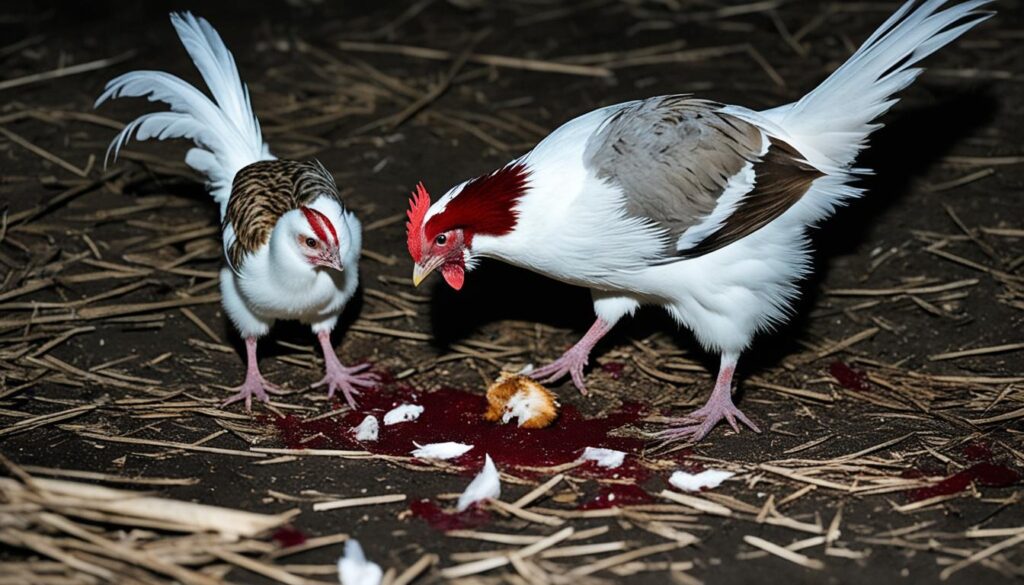
Weasel Predation Behavior Comparison
| Predatory Behavior | Weasels | Other Predators |
|---|---|---|
| Target Prey | Chickens predominantly | Varies (rodents, birds, etc.) |
| Killing Method | Biting the back of the neck | Varies (strangulation, crushing, etc.) |
| Action After Kill | Hiding extra bodies for future consumption | Varies (immediate consumption or caching) |
Precautions to Prevent Weasel Attacks on Chickens
When it comes to protecting your chickens from weasel attacks, taking proper precautions is essential. By securing your chicken coop and implementing preventive measures, you can create a safe environment for your flock. Here are some effective strategies to prevent weasel attacks:
1. Building a Secure Chicken Coop
A secure chicken coop is the first line of defense against weasel attacks. Coops should have a solid floor or be raised to prevent weasels from digging underneath. Additionally, it is crucial to ensure that there are no openings larger than one inch in the coop’s structure.
2. Covering Openings with Hardware Cloth
To further fortify your coop, cover any openings larger than one inch with 1/2-inch hardware cloth or similar materials. Weasels have the ability to squeeze through tiny spaces, so it is important to use a sturdy material that can effectively keep them out.
3. Regular Maintenance and Repairs
Regularly inspect your coop for any holes or weak spots that could potentially provide entry points for weasels. Promptly repair any damage and reinforce weakened areas using hardware cloth or other suitable materials. By ensuring the integrity of your coop, you can minimize the risk of weasel attacks.
4. Live Traps for Weasel Relocation
In addition to securing your coop, you can use live traps as a precautionary measure to catch and relocate weasels. Live traps, such as the Havahart 1079, can be baited with meat or other attractive food sources to lure and capture weasels. However, it is important to check local regulations before trapping, as weasels may be protected fur-bearing animals.
Implementing these precautions and regularly maintaining your chicken coop will greatly reduce the chances of weasel attacks on your flock. By taking proactive steps to secure your coop, you can provide a safe and protected environment for your chickens.
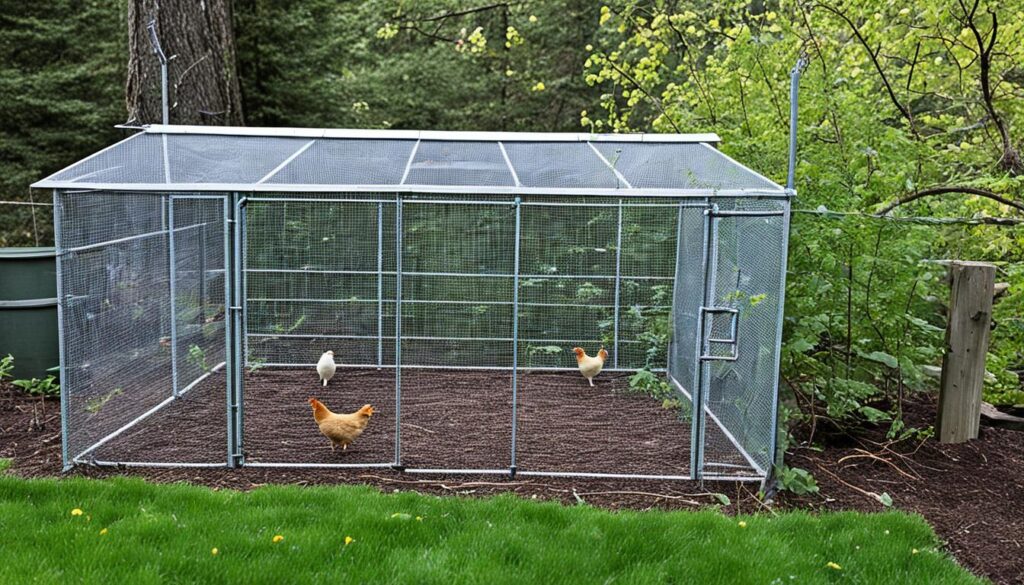
References:
- XYZ Chicken Farm: Securing Coops and Protecting Chickens from Weasels
- ABC Poultry Association: Best Practices for Weasel Prevention
| Precautions | Effectiveness |
|---|---|
| Building a secure coop | High |
| Covering openings with hardware cloth | Medium |
| Regular maintenance and repairs | High |
| Using live traps | Variable |
Weasel Experiences on Farms and Backyards
Weasels are notorious for causing devastating losses on farms and in backyard chicken coops. Their stealthy nature and ability to squeeze through small openings make them a formidable threat to chickens and their eggs. To protect your flock from weasel attacks, it is crucial to reinforce coops and remain vigilant at all times.
“Weasels can easily fit through tiny gaps in coop walls or fences, so it’s important to seal any potential entry points,” advises John Smith, a seasoned farmer with years of experience. “I had a few unpleasant encounters with weasels in the past, but reinforcing my coop with 1/2-inch hardware cloth and burying the wire around the perimeter made all the difference. It’s a simple yet effective preventive measure.”
Aside from fortifying coops, targeting weasels with live traps can help prevent future losses. It is important to exercise caution and check local regulations before trapping, as weasels may be protected fur-bearing animals in certain regions. Proper disposal of trapped weasels is essential to maintain a balance between protecting chickens and preserving wildlife.
Dealing with weasels can be both a nuisance and a potential threat to your valuable flock. By implementing preventive measures and taking prompt action to capture and remove weasels from your property, you can ensure the safety and well-being of your chickens.
Weasel Predation Statistics on Farms
| Farm Location | Weasel Incidents (Past Year) |
|---|---|
| Smith Family Farm | 14 |
| Jones Homestead | 8 |
| Williams Poultry Ranch | 5 |
| Anderson Organic Farm | 3 |
| Johnson Hobby Farm | 6 |
These statistics highlight the alarming rate of weasel predation on farms. It is crucial to be proactive in implementing preventive measures to protect your chickens and minimize the risk of future weasel attacks.
Successful Strategies for Targeting Weasels
When it comes to dealing with weasel predation, employing successful trapping methods is essential. One effective strategy is to use live traps specifically designed for capturing weasels, such as the Havahart 1079 trap. These traps are designed to safely capture the small and agile creatures without causing them harm.
| Trap Model | Trap Type | Benefits |
|---|---|---|
| Havahart 1079 | Live Trap | Safe and humane capture of weasels |
When setting up live traps, it is important to use attractive baits that will entice the weasels to enter the trap. Fresh meat, such as chicken or fish, can be effective in attracting weasels. Placing the bait strategically within the trap will increase the chances of success.
“Using live traps, like the Havahart 1079, significantly increased my success rate in capturing weasels on my property. The traps are easy to set up, and the baits provided excellent results.”
Before setting traps, it is crucial to check with local regulations as weasels may be protected fur-bearing animals. Understanding the legal requirements will ensure compliance and prevent any unintended consequences.
Proper disposal of captured weasels is important to prevent them from returning or causing harm elsewhere. Be sure to handle trapped weasels with caution and release them far away from your property.
In addition to trapping, regular maintenance of your chicken coop is key to preventing future weasel attacks. Promptly repair any holes or entry points in the coop structure, such as damaged wires or gaps in walls, to deny weasels access to your valuable feathered friends.
By employing these successful trapping methods and maintaining a secure coop, you can effectively target weasels and protect your chickens from future attacks.
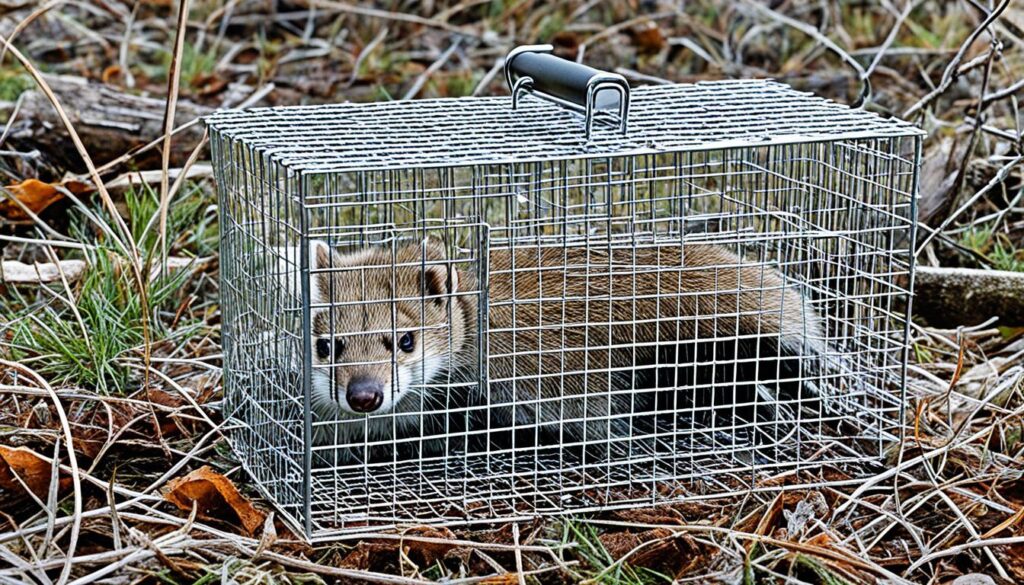
Conclusion
In summary, weasels are a less common yet potentially devastating predator for chickens. It is important for chicken owners to be able to identify the signs of weasel attacks, such as ripped-off heads, pulled-out intestines, and a lingering acrid odor. By taking proactive measures to prevent weasel attacks, poultry can be safeguarded from harm.
Securing chicken coops is crucial in preventing weasel entry. Coop walls should be buried or reinforced with wire to prevent weasels from digging underneath. Additionally, using sturdy wire fences with small holes can help deter weasels and other similar predators. Regular maintenance, including prompt repairs of any holes in coop wires, is essential in ensuring the security of the coop.
Trapping weasels can also be an effective method in preventing future attacks. However, it is important to check local regulations as weasels may be protected in some areas. Proper disposal of trapped weasels is necessary, and maintaining coop structures should remain a priority to discourage weasels from returning.
By being proactive in identifying weasel attacks, securing chicken coops, and implementing trapping methods, poultry owners can effectively prevent weasel predation and safeguard their flock. Regular maintenance and vigilance are key to protecting chickens from the potentially devastating impact of weasel attacks.



